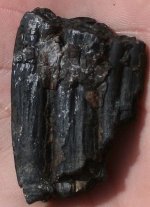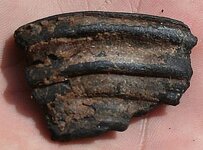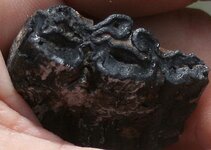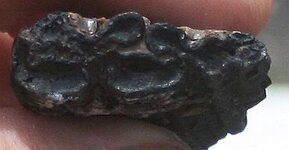IndianRiverSonrise
Sr. Member
- Jun 16, 2007
- 270
- 3
- Detector(s) used
- Various
I found the following on a Florida beach. I was wondering if the more brownish substance on the outside of the teeth is part of the tooth or matrix? Second, if you can tell anymore about the identify than equus? Third, would it harm the teeth to spray them with a clear laquer or polyurethane to preserve them or should I get the specific mixture that is recommended for such things? And fourth, you can see horizontal lines running across the teeth, which I presume to be like growth rings, is that what the rings actually are?
Thanks for any information or ideas on any of the questions.
From bottom to top, the longest tooth is about two inches high. And across the top, it measure about 1.25 inches.
Thanks for any information or ideas on any of the questions.
From bottom to top, the longest tooth is about two inches high. And across the top, it measure about 1.25 inches.








